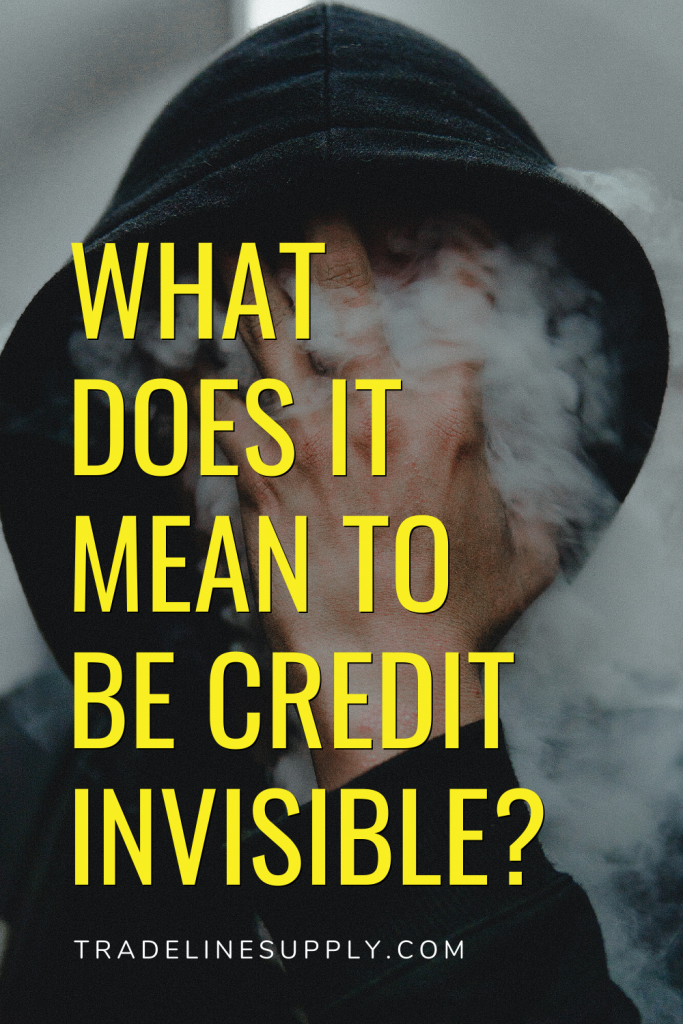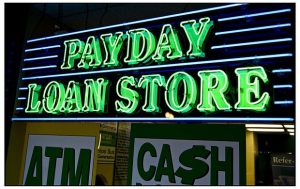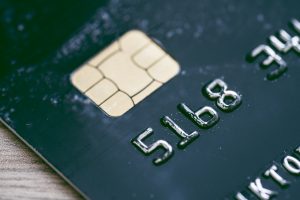 Here’s a number that may shock you: about one in five American adults do not have a credit score.
Here’s a number that may shock you: about one in five American adults do not have a credit score.
About 26 million consumers are what the Consumer Financial Protection Bureau (CFPB) calls “credit invisible,” which means they don’t have any credit history. Another 19 million consumers have credit records that cannot be scored by a commonly used credit scoring model.
Added together, that means 45 million consumers in our country—nearly one in five adults—lack a credit score.
Without a credit score or a sufficient credit record, it can be extremely difficult to navigate modern society. Credit scores indicate a consumer’s credit risk and therefore serve as the basis for most lending decisions, along with income. It can be difficult or even impossible to obtain credit without one.
Credit scores may also be used by landlords to evaluate prospective tenants, by insurance providers to determine rates, and by utility companies when assessing deposits. Employers may pull prospective employees’ credit reports (not scores) in order to make hiring decisions.
Therefore, consumers who are credit invisible or credit unscorable may face serious challenges in obtaining credit, housing, insurance, utilities, and employment.
Unfortunately, but perhaps not surprisingly, the problem of credit invisibility is concentrated among certain demographics of consumers.
In this article, we’ll address who is most impacted by credit invisibility and the consequences of lacking credit history. In addition, we will discuss potential solutions to this issue and explain how consumers can become credit visible.
Defining Credit Invisibility and Unscorability
The CFPB published a report on credit invisibility in 2015 in which the Bureau determined how many Americans lack credit histories.
For the report, they analyzed a nationally representative data set containing the anonymized credit reports of nearly 5 million consumers. The CFPB purchased these anonymized credit reports from one of the major credit bureaus.

By subtracting the number of credit records in a census tract from the total number of adults living in the census tract, they were able to estimate the number of credit invisible consumers in each census tract.
Overall, the CFPB found that more than 80% of the adult population in the United States (188.6 million consumers) have credit records with at least one of the major credit bureaus that contain enough information to be scored by the commercially available credit scoring model used for the CFPB’s research.
In contrast, they found that 8.3% of adults had credit records that could not generate a credit score using this credit scoring model. This group of 19.4 million consumers is divided about equally between consumers whose credit reports do not contain enough information to be scored (“insufficient unscored”) and consumers whose credit history is not recent enough to be scored (“stale unscored”).
This leaves 11% of the adult population who are completely credit invisible, meaning they do not have a credit record at all with any of the major credit reporting agencies.
What Are the Consequences of Being Credit Invisible or Unscorable?
The credit reporting agencies and credit scoring companies have been extremely successful in marketing their products to other industries. As a result, credit checks are now a standard procedure in many essential aspects of modern life. This means that being credit invisible can have devastating consequences for consumers.
Credit May Be Unattainable or Very Expensive
The “credit catch-22” is that in order to qualify for credit, it helps to already have a history of using credit. Lenders want to see a pattern of responsible borrowing before they take the risk of extending credit to someone.
Therefore, the obvious problem with having no credit history or minimal credit history is that it bars access to mainstream credit products such as loans and credit cards.
This lack of access to conventional credit options leads credit-invisible and unscored consumers to turn to “alternative financial service providers” (AFSPs), which include businesses such as payday lenders, pawn shops, and check-cashing stores. Unfortunately, services provided by AFSPs typically come with much higher costs than traditional credit products offered by banks.

As most consumers do, those who are credit invisible or unscorable have legitimate credit needs, but unfortunately, their options are usually limited to high-cost AFSPs.
Housing May Be Difficult to Find and More Costly
Renting a home almost always involves a credit check for the prospective tenants. Often, landlords will simply reject applicants who do not have a credit record.
Some landlords may accept tenants who don’t have any credit history, but since it’s financially risky for them, they may charge more for the deposit or ask the tenant to prepay multiple months of rent.
Utility Providers and Wireless Carriers May Require a Deposit
Providers of utilities such as gas, electricity, water, trash, internet, and phone service also typically conduct credit inquiries on consumers. Knowing your credit score helps these companies judge how likely they think you are to pay your bills on time.
If you don’t have a credit score, they can’t make that judgment with confidence. To hedge their bets, the utility companies may ask you to pay a larger deposit upfront.
Insurance Could Be More Expensive
Your credit scores are often considered when insurance companies decide on your rates for auto insurance and homeowner’s insurance. If you don’t have credit scores, you can still get insurance, but you will likely pay a much higher premium than someone with a good credit score, according to MarketWatch.
Who Is Most Likely to Be Credit Invisible or Unscorable?
As you may remember if you’ve read our article on the topic of equal credit opportunity, the likelihood of being credit invisible isn’t the same for all consumers. In fact, there are strong correlations between credit invisibility and race, age, geography, and income.
Black and Hispanic Consumers Are More Likely to Lack Credit History

Compared to consumers who are White or Asian, Black and Hispanic consumers are more likely to be credit invisible or to have credit records that cannot be scored, according to the CFPB’s report.
Only 9% of White and Asian consumers are credit invisible, compared to about 15% of Black and Hispanic consumers. Similarly, only 7% of White adults have unscorable credit records, in comparison to 13% of Black adults and 12% of Hispanic adults.
The CFPB observed that this pattern was consistent across all age groups, which demonstrates that the differences between racial groups are established early on and never go away.
Credit Invisibility Is Correlated With Age
Younger consumers are far more likely to lack credit history than older adults. The CFPB report states that the vast majority (80%) of 18 to 19-year-olds are either credit invisible or have unscored credit records.
For the 20 to 24-year-old age group, less than 40% are credit invisible or unscored. After the age of 60, however, this percentage begins to increase with age, which could be due to a lack of recent credit history.
Because credit history is gradually established over the course of one’s life, it makes sense that credit invisibility and unscoreable credit records would be more prevalent among young adults.
Income May Affect the Ability to Acquire Credit History
The CFPB found a strong correlation between income and having a credit record that can be scored. In low-income neighborhoods, nearly 30% of consumers are completely credit invisible, while another 15% are unscorable. In total, nearly half of consumers in low-income areas either have no credit history at all or not enough credit history to generate a credit score.
In contrast, in higher-income neighborhoods, only 4% of consumers are credit invisible and 5% have credit files that cannot be scored.
These results aren’t surprising—income is often even more important than credit scores when it comes to qualifying for credit. Even without having any credit history, a consumer with a high income will likely find it easier to qualify for credit than a low-income consumer and thus is more likely to open credit cards or take out loans than a low-income consumer.

On the other hand, since low-income consumers may have difficulty accessing traditional sources of credit, they may turn to AFSPs such as payday lenders, which typically do not report to the credit bureaus. This may help partly explain why there is such a stark difference in the rates of credit invisibility between higher-income and lower-income consumers.
When consumers in low- and moderate-income neighborhoods do become credit visible, according to the CFPB, they tend to make the transition later in life than consumers in middle- and upper-income neighborhoods.
In addition, the CFPB report on “Becoming Credit Visible” concluded that consumers who reside in low-income neighborhoods are three times more likely than consumers in high-income neighborhoods to first acquire credit history from non-loan items such as collection accounts or public records (27% of low-income consumers versus just 8% of high-income consumers).
In contrast, consumers in upper-income neighborhoods are much more likely to start their credit records by opening credit cards.
Since non-loan credit products are generally derogatory items like collections, this statistic suggests that low-income consumers are far more likely to start off their credit history with bad credit. The negative marks could hinder these consumers from being able to qualify for credit for a long time, which means they would likely have few, if any, opportunities to improve their credit profile with on-time payments toward loans or credit cards.
Geographic Regions of Credit Invisibility
Another CFPB report, this one from 2018, looked at geographic patterns in credit invisibility, such as differences between urban and rural areas as well as the problem of “credit deserts.”

Credit Deserts
A “credit desert” is generally defined as an area that lacks access to traditional financial service providers. However, they may have access to AFSPs such as payday lenders.
In these areas, rates of credit invisibility may be higher due to a lack of access to traditional sources of credit.
Urban vs. Rural Areas
The highest proportion of credit-invisible consumers is found in rural areas, even in upper-income neighborhoods. This may be related to a lack of access to the internet in rural areas.
What Is Being Done to Solve Credit Invisibility?
Credit invisibility in America is a serious problem that is not going to be solved overnight. It’s going to take overarching structural changes to address the root causes of credit invisibility and credit inequality.
Let’s explore the potential solutions currently being researched by the U.S. government and the credit scoring and reporting companies to address credit invisibility and credit inequality.
Government Programs to Support Credit Access
In the CFPB’s Annual Financial Literacy Report for 2019, the Bureau described their efforts to support inclusion and serve historically underserved communities by assisting local governments that are working to address credit invisibility in their cities.
These municipal programs typically focus on helping consumers build good credit by providing consumers with credit education, credit services, and credit products.
The CFPB worked with four cities in the fiscal year 2019 (Atlanta, Georgia; St. Louis, Missouri; Shawnee, Oklahoma; and Klamath Falls, Oregon), so it appears that government efforts to combat credit invisibility thus far have been localized and small-scale.
Alternative Credit Data

Alternative credit data is data derived from sources other than traditional credit reporting information. This may include data from ASFPs, utility payments, rent payments, full-file public records, and financial information that consumers can choose to share, such as bank account information (known as “consumer-permissioned data”).
While alternative data does have the potential to help millions of consumers become credit visible, for many of them, that may not be a good thing. FICO’s preliminary research using their alternative data scoring model showed that two-thirds of newly scored consumers ended up with a score that was below 620, which is considered bad credit.
Having bad credit can be even worse than having no credit, so for these consumers, the use of alternative data could hurt more than it helps.
Furthermore, the National Consumer Law Center has argued that the negative effects of such a credit scoring system would disproportionately impact people of color and low-income consumers.
Alternative data may represent a possible solution to credit invisibility, but it should be implemented in a way that does not simply perpetuate and amplify the credit inequality that disadvantaged consumers already struggle with.
How to Become Credit Visible
It’s clear that credit invisibility, lack of access to credit, and inequality in the credit system are not going away anytime soon.
However, there are strategies that individual consumers can use to start building credit and become credit visible in a way that sets them up for success.
Becoming Credit Visible Through Credit Piggybacking
It’s very difficult to get approved for a primary account when you don’t have any credit history to show lenders that you can be trusted. However, you can start to build a credit history even without opening a primary account by becoming associated with someone else’s credit record. This is actually a fairly common way for consumers to start establishing credit.

In “Becoming Credit Visible,” the CFPB noted that about 15% of consumers opened their first credit account with a co-borrower, while another 10% first created their credit record by becoming an authorized user on someone else’s tradeline. This means that in total, about one in four consumers initially gain credit history with the help of someone else.
There are three main ways to do this:
1. Get a Cosigner or Guarantor
When you can’t get credit on your own, having someone with good credit vouch for you as a cosigner or guarantor can make a huge difference in your chances of being approved for credit.
However, it can be difficult to find someone to take on this role, since it not only requires someone with good credit but someone who would be willing to be on the hook for your debt if you cannot repay it.
2. Open a Joint Account With Someone
A joint account is an account that you share with another person. Both parties have access to the account and both people can be held responsible for the debt.
If you know someone with good credit who is willing to open a joint account with you, their positive credit history can help the two of you get approved, similar to getting a cosigner or guarantor. Since both parties jointly share responsibility for the account, you should only open an account with someone you trust completely.
Joint credit cards are not very common, so your options for opening a joint account may be limited.
3. Become an Authorized User on a Credit Card

While the previous two strategies involve opening a new primary account, which means you’d be starting out with no credit age, the authorized user method provides a shortcut to gaining years of credit history.
When you become a credit card authorized user, that account’s history is then reflected in your credit report, as long as the issuer reports authorized user information to the credit bureaus.
The CFPB’s research showed that 19% of consumers (about one in five) had at least one authorized user account on their credit record, and over half of these consumers had transitioned out of credit invisibility as a result of one of their authorized user accounts. On average, consumers gained at least two years of credit history from authorized user accounts.
In addition, authorized user accounts can increase the total credit limit of your profile.
For these reasons, the authorized user strategy is the fastest and easiest way for those who lack credit history to start building credit.
We cover each of these credit-building strategies in greater detail in our article on the fastest ways to build credit.
Building Credit Through Primary Accounts
Once you’ve established some credit history through credit piggybacking, you can look into opening your own primary accounts.
Credit-Builder Loans

A credit-builder loan is a type of installment loan designed for those who are just starting out on the path to building credit. Lenders are able to offer these loans to consumers with thin credit files or no credit history because they are set up so that the borrower makes all the payments toward the loan before receiving the funds.
See our article on credit-builder loans for more information on how they work and whether a credit-builder loan could help you.
Secured Credit Cards
Those with limited credit history may also benefit from opening a secured credit card. Secured credit cards require you to make a security deposit, the amount of which typically becomes your credit limit. Secured cards typically have low credit limits, but they can help you build credit by reporting your payment history to the credit bureaus.
Retail Store Credit Cards
A retail store credit card may also be a good option for those who do not have a credit history, as retail cards tend to be easier to get approved for than bank credit cards. Just be careful not to carry a balance from month to month since retail cards also come with higher interest rates.
Creating Equal Credit Opportunity
Unfortunately, inequality has been baked into the credit system from the start, and this fact prevents low-income and minority consumers from getting ahead financially.
For example, the CFPB’s report on becoming credit visible found that consumers in low- and moderate-income neighborhoods were found to be 48% and 25% less likely, respectively, than consumers in middle-income neighborhoods to become credit visible through a joint account. Similarly, consumers in lower-income neighborhoods who had recently transitioned out of credit invisibility were less likely to have authorized user accounts on their credit files compared to those in higher-income areas.
In addition, lower-income consumers were less likely to become credit visible via authorized user accounts. Lower-income consumers who did have their credit records created as a result of authorized user accounts gained less credit history than higher-income consumers.
Since this strategy requires you to partner with someone who has decent credit or a good income, perhaps low-income consumers simply do not have access to these resources and partnerships within their social networks.
In the words of the CFPB, “…a lack of co-borrowers may be an important contributor to credit invisibility in low- and moderate-income neighborhoods.”

As we learned earlier, credit invisibility is significantly more prevalent among Black and Hispanic consumers. Altogether, the data suggest that consumers who are Black, Hispanic, or low-income are at a severe disadvantage when it comes to establishing credit and building a credit history.
These are just a few of the many ways in which inequality is manifested throughout the credit system. Simply put, privileged consumers have the opportunity to build credit through credit piggybacking while many others are denied this opportunity.
Historically, the strategy of building credit by becoming an authorized user was primarily limited to the wealthy. Today, however, more consumers of all backgrounds are beginning to take advantage of the benefits of authorized user accounts.
In addition, there is a wealth of information online that consumers can use to educate themselves on the credit system and start off on the right foot when it comes to building credit—start with the free resources in our Knowledge Center and YouTube channel!
Related Reading
What Happened to Equal Credit Opportunity for All?
The Surprising History of the Credit Bureaus